Choosing the right OBD2 scanner can be crucial for both car enthusiasts and professional mechanics. Two popular options on the market are the OBDLink MX+ and the BlueDriver. Both are Bluetooth OBD adapters designed to help you diagnose your vehicle’s health, but they offer different features and capabilities. This in-depth comparison will analyze OBDLink MX+ and BlueDriver across critical categories to determine which scan tool truly comes out on top. We’ll delve into enhanced OEM diagnostics, sampling rates, over-voltage protection, OBD app support, battery drain protection, and warranty to provide a comprehensive overview.
Enhanced OEM Diagnostics: Unlocking Deeper Vehicle Insights
The diagnostic power of a scan tool heavily relies on its ability to access enhanced data beyond generic OBD-II information. “Enhanced OEM diagnostics” refers to manufacturer-specific data, which includes:
- Enhanced trouble codes: Covering systems like ABS, Airbag, and HVAC, which generic OBD-II often misses.
- Enhanced parameters: Providing real-time data on components like transmission temperature, tire pressure, and wheel speed, offering a more detailed view of vehicle operation.
Let’s see how OBDLink MX+ and BlueDriver compare in this crucial area:
| Feature | MX+® | BlueDriver® |
|---|---|---|
| Generic OBD-II | Yes | Yes |
| OEM DTCs | Yes | Limited Support |
| OEM Live Parameters | Yes* | No |
| GM SW-CAN | Yes | No |
| Ford MS-CAN | Yes | No |
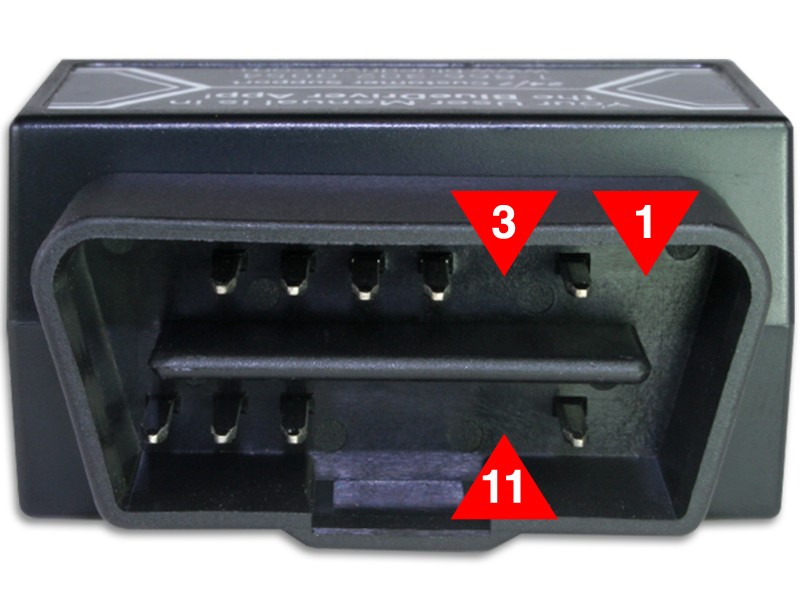
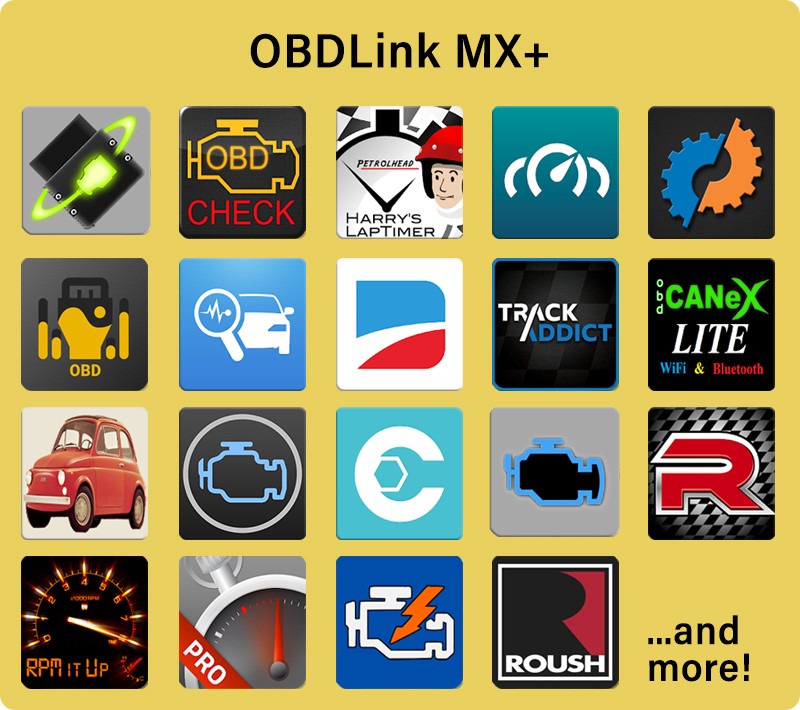
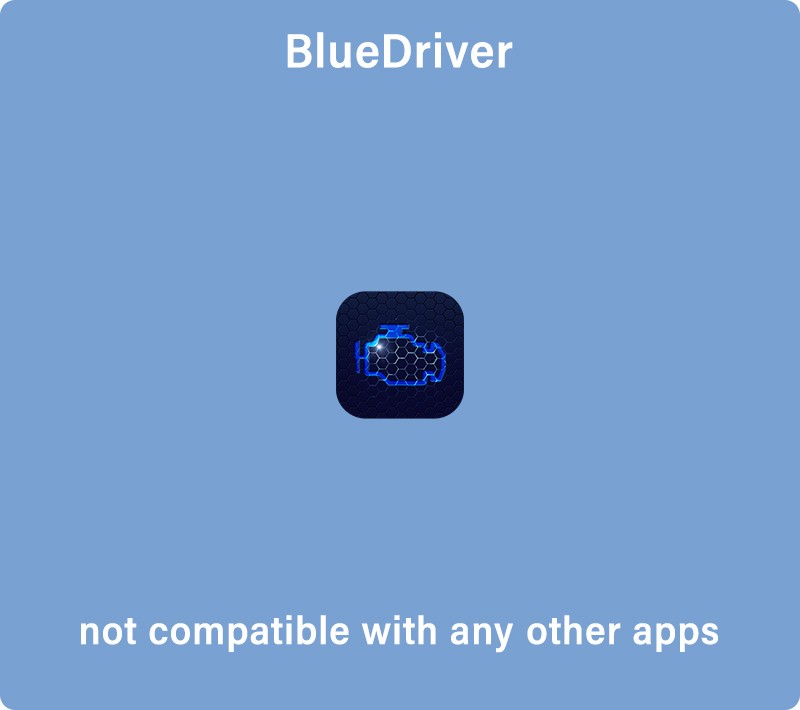
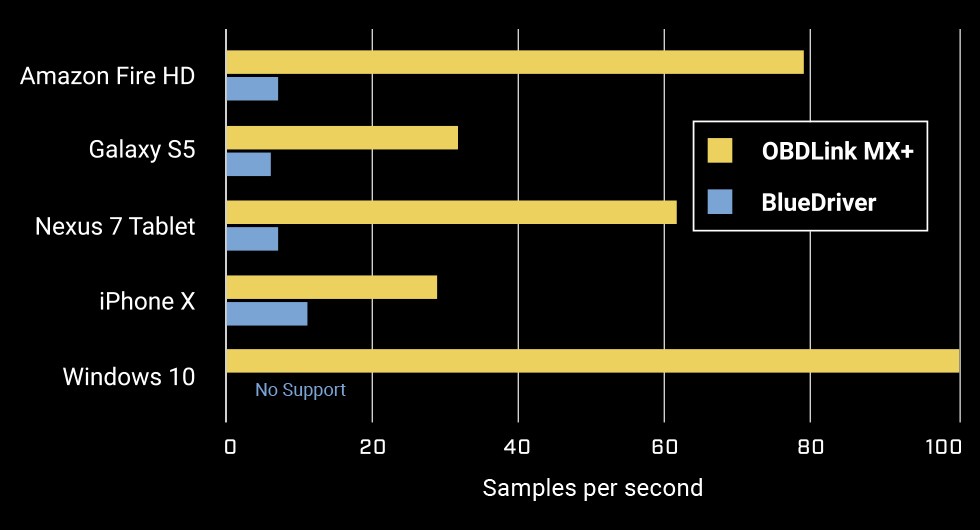
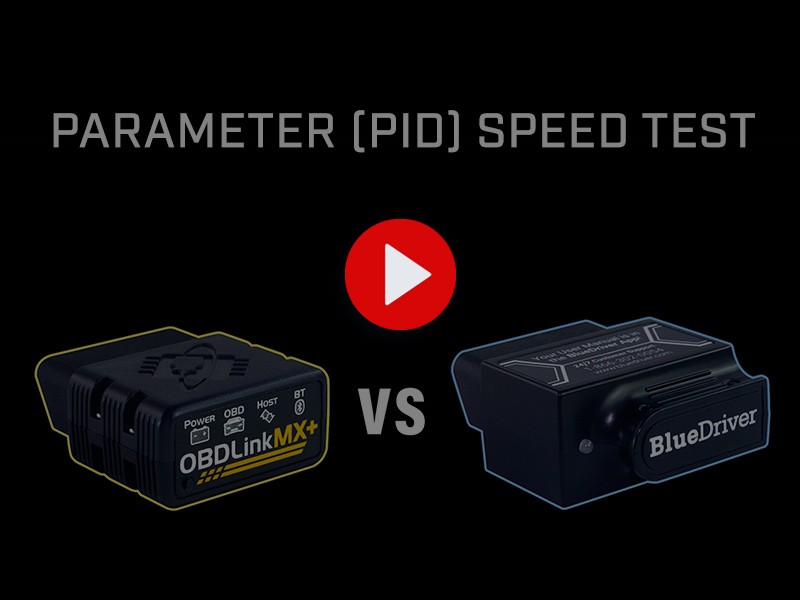

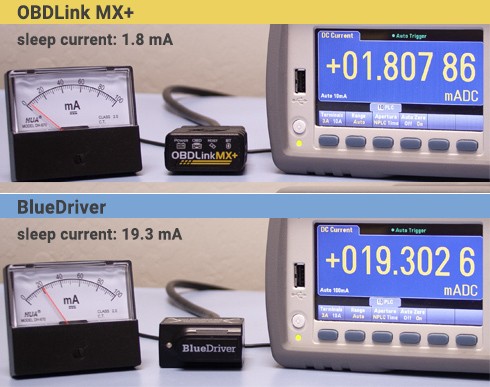
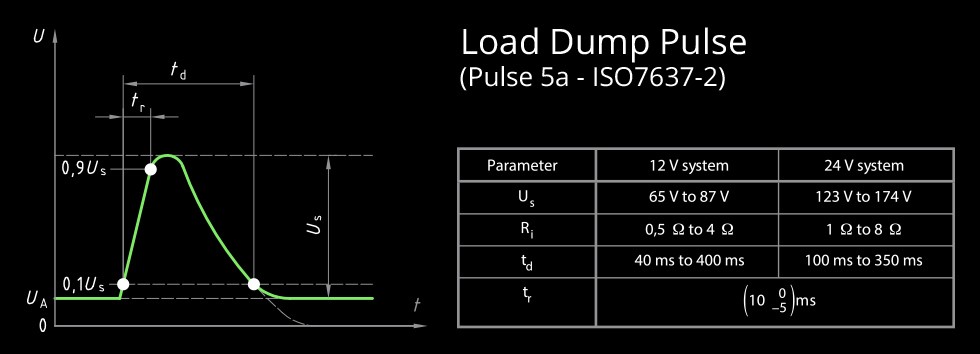
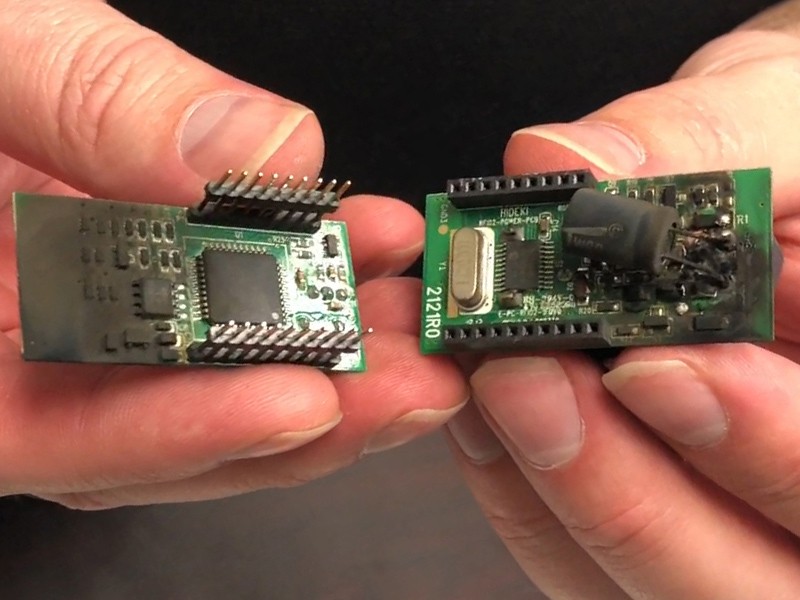
*Refer to the “Manufacturer-Specific Enhanced Diagnostics Support” document for detailed vehicle coverage.
While both scanners support basic OBD-II functions, their capabilities diverge significantly when it comes to enhanced OEM diagnostics.
BlueDriver, while capable of reading some OEM diagnostic trouble codes (DTCs), falls short by not supporting any OEM live parameters. If you need to monitor vital readings like transmission temperature or tire pressure, BlueDriver simply cannot provide this level of insight.
A further limitation of BlueDriver is its inability to access manufacturer-specific networks in GM and Ford vehicles. This is due to a hardware deficiency – BlueDriver lacks pins 1, 3, and 11, which are necessary to communicate with these networks. OBDLink MX+, on the other hand, is equipped to communicate on both GM SW-CAN and Ford MS-CAN networks. This crucial difference gives OBDLink MX+ access to thousands of additional DTCs and parameters that remain inaccessible to BlueDriver, providing a much more comprehensive diagnostic experience for owners of these vehicle brands.
Consider the network architecture of a 2015 Ford Expedition as an example. Modern vehicles utilize multiple electronic control modules (ECUs) that manage various functions. These ECUs communicate over vehicle networks, such as HS-CAN and MS-CAN in this Ford model. OBDLink MX+ can access ECUs on both networks, offering complete diagnostic coverage. However, BlueDriver’s limitation to HS-CAN leaves it unable to access any modules or data on the MS-CAN network, significantly restricting its diagnostic capabilities on these vehicles.
OBD App Support: Flexibility and Functionality
The software and app ecosystem surrounding an OBD2 scanner is just as important as the hardware itself. Both OBDLink MX+ and BlueDriver offer their own companion apps for Android and iOS devices. Additionally, OBDLink MX+ includes a license for OBDwiz, a Windows-based diagnostic program, extending its compatibility to desktop users.
However, the key differentiator in app support lies in the open versus closed architecture approach. OBDLink MX+ embraces an open architecture, making it compatible with a wide range of third-party automotive apps. This vast compatibility dramatically expands the functionality of the MX+, allowing users to choose from apps specializing in:
- Advanced diagnostics: Performing in-depth system scans and tests.
- Performance tracking: Recording lap times and performance metrics.
- Customizable dashboards: Creating personalized digital gauges.
- Performance enhancement: Unlocking hidden vehicle performance features.
- Fuel efficiency: Monitoring and optimizing fuel consumption.
- Vehicle customization: Adjusting vehicle settings and parameters.
- Remote vehicle control: Controlling door locks and remote start on compatible vehicles.
BlueDriver, in contrast, employs a closed architecture. This means users are restricted to the single, proprietary BlueDriver app. While the BlueDriver app may offer a decent range of features, it lacks the flexibility and expanded capabilities offered by the numerous third-party apps compatible with OBDLink MX+.
| Feature | MX+® | BlueDriver® |
|---|---|---|
| Third-party app support | Yes – Dozens of popular apps | No – BlueDriver® app only |
| iOS support | Yes | Yes |
| Android support | Yes | Yes |
| Windows support | Yes | No |
Sampling Rate: Capturing Data with Precision
Sampling rate, measured in samples or data points captured per second, is a critical specification for OBD devices. A high sampling rate is essential for accurately monitoring rapidly changing signals and multiple parameters simultaneously. It directly impacts the smoothness and responsiveness of live data graphs and digital dashboards.
Benchmark testing reveals a significant performance gap between OBDLink MX+ and BlueDriver in terms of sampling rate. BlueDriver’s sampling rate fluctuated between 5 and 10 samples per second during testing. Under identical conditions, OBDLink MX+ demonstrated speeds up to ten times faster. This superior sampling rate translates to more accurate and responsive real-time data, crucial for diagnosing intermittent issues and performance monitoring.
Battery Drain Protection: Responsible Power Management
For OBD2 devices designed to remain plugged in, minimizing battery drain is paramount. When the vehicle engine is off, the alternator stops charging the battery, and any parasitic load can eventually drain it. An intelligently designed scan tool should enter a low-power “sleep” mode when the engine is off, minimizing energy consumption.
Independent tests have highlighted significant differences in battery drain performance between OBDLink MX+ and BlueDriver. BlueDriver takes three times longer to enter a low power mode and consumes 7.5 times more energy in idle mode. More alarmingly, BlueDriver’s sleep mode current draw was measured at 19.3 milliamperes. This is:
- Twice the typical parasitic current draw of the vehicle itself.
- Ten times higher than OBDLink MX+’s sleep current draw.
BlueDriver’s excessive current draw in sleep mode poses a real risk of battery drain, as evidenced by numerous user complaints.
| Feature | MX+® | BlueDriver® |
|---|---|---|
| Sleep delay | 10 minutes | 30 minutes |
| Idle current | 39 mA | 73 mA |
| Sleep current | 1.8 mA | 19.3 mA |
Overvoltage Protection: Safeguarding Against Electrical Spikes
The automotive electrical environment is harsh, with potential voltage fluctuations that can damage sensitive electronics. One of the most dangerous events is a “load dump” pulse (Pulse 5a), a high-energy voltage spike that occurs when the battery is abruptly disconnected from the alternator while charging. This can happen due to corroded battery terminals or other electrical issues.
To assess overvoltage protection, both OBDLink MX+ and BlueDriver were subjected to rigorous testing. Initially powered at 12 volts to ensure normal operation, they were then exposed to a 400-millisecond, 90-volt pulse simulating a load dump. OBDLink MX+ successfully withstood the pulse and continued to operate normally. However, BlueDriver failed catastrophically, becoming inoperable after the pulse.
Further testing involved slowly ramping up the voltage. BlueDriver started smoking at just 19 volts and caught fire shortly after. In contrast, OBDLink MX+’s protection circuitry activated at 18 volts, and it remained fully functional even after power was restored to 12 volts.
In a final extreme test, OBDLink MX+ endured a continuous 90-volt supply without any damage. The same continuous 90-volt test caused BlueDriver’s capacitor to explode, resulting in smoke and permanent failure.
| Feature | MX+® | BlueDriver® |
|---|---|---|
| 90V pulse | No damage | Permanent damage |
| Slow ramp-up (12V to 90V) | No damage | Smoke at 19V, fire, permanent damage |
| Continuous 90V | No damage | Capacitor explosion, smoke, permanent damage |
These overvoltage protection tests clearly demonstrate a critical difference in durability and reliability. OBDLink MX+ is designed to withstand harsh automotive electrical conditions, while BlueDriver lacks adequate protection, making it vulnerable to damage from common voltage spikes.
Warranty: Long-Term Peace of Mind
Warranty coverage reflects the manufacturer’s confidence in their product’s quality and durability. OBDLink MX+ offers triple the warranty coverage of BlueDriver, providing a 3-year warranty compared to BlueDriver’s 1-year warranty (accurate as of September 1, 2019). This longer warranty period offers users greater peace of mind and protection against potential defects.
| Feature | MX+ | BlueDriver® |
|---|---|---|
| Warranty | 3 years | 1 year |
Conclusion: OBDLink MX+ – The Clear Winner
| Feature | MX+® | BlueDriver® |
|---|---|---|
| Enhanced OEM diagnostics | DTCs and thousands of OEM parameters, access to GM and Ford proprietary networks | DTCs only; no access to GM or Ford proprietary networks |
| OBD app support | Dozens of compatible apps | One app |
| Sampling Rate | Up to 100 samples per second | Up to 10 samples per second |
| Battery drain protection | Excellent | Inadequate – sleep current too high |
| Overvoltage protection | Survives continuous 90 volts with no damage | No overvoltage protections (fails at 19 volts) |
| Warranty | 3 years | 1 year |
After a detailed comparison across these critical categories, OBDLink MX+ emerges as the superior OBD2 scanner. It outperforms BlueDriver in enhanced OEM diagnostics, OBD app support, sampling rate, battery drain protection, and overvoltage protection, while also offering a longer warranty.
For users seeking a comprehensive, reliable, and future-proof OBD2 scan tool, OBDLink MX+ is the clear and compelling choice. Its advanced features and robust design make it a valuable asset for vehicle diagnostics and performance monitoring.
